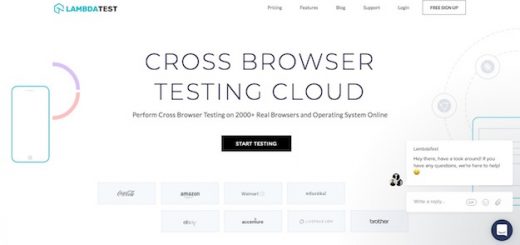Let’s say a potential customer is ready to check out, but needs to ask one last question about international shipping or sizing conversions. If their Friday afternoon email or phone call goes unanswered over the weekend, they may have moved on by the time you reply on Monday.
To be sure, email contact forms and phone support lines are great tools. But savvy web storeowners know they need immediate customer service tools to provide well-rounded and ultra-responsive help that will ultimately lead to higher conversion rates. Here are a few ideas for leveraging customer service to drive sales and customer loyalty.
Live Chat
Live chat is the closest online shoppers can get to feeling like they just walked into a physical store and interacted with a sales associate. Choosing a cloud ecommerce platform that supports responsive live chat is the first step to providing next-level customer service. Your customers will be able to get the answers they need lightning fast, rather than sending a missive out into cyberspace and hoping you eventually reply. It bodes well for your brand’s image.
But there’s another unique perk to using live chat. As Zendesk notes, it’s easy to track the ROI in just minutes based on how each live chat interaction goes. Your customer service specialists can use this tool in a wide variety of ways: including answering product questions, as well as upselling and working with customers after the sale to track shipping or returns. Include a healthy mix of pre-written messages and genuine responses from your customer service team to streamline the process.
Social Media
As Shakespeare wrote long ago, “All the world’s a stage.” Nowhere is this truer than when it comes to social media. It’s become a trend for disgruntled customers to go straight to the source by tagging companies and brands on social media and publicly airing their complaints. The last thing you want for your ecommerce operation is to log onto your Facebook, Twitter or Instagram account and see that someone posted a long rant about you for friends and strangers alike…18 hours ago. Not only does this reveal a customer service failing on your part, but it may have already scared away potential customers who will forever associate your store with poor service.
The lesson here: Be responsive! Use social media like your shoppers do. Keep an eye on social channels and answer as quickly as possible. According to Kissmetrics, 46 percent of customers expect brands to provide customer service via Facebook, and a staggering 88 percent of customers are “less likely to buy from companies who leave social media complaints unanswered.”
Ask Your Audience
When in doubt, ask customers for feedback about their shopping experience. You need to know the good, the bad and the ugly so you can continue to tweak your customer service regimen and improve your bottom line. Identify problem areas, continue to play up your strengths and never settle for subpar service. Your customers sure won’t.
The key to providing proactive customer service that increases conversion rates is a multi-channel approach. Show your shoppers that they have options when it comes to contacting your store, and that the helpful response they need is just seconds or minutes away. From there, they can continue along their buying journey and convert.




